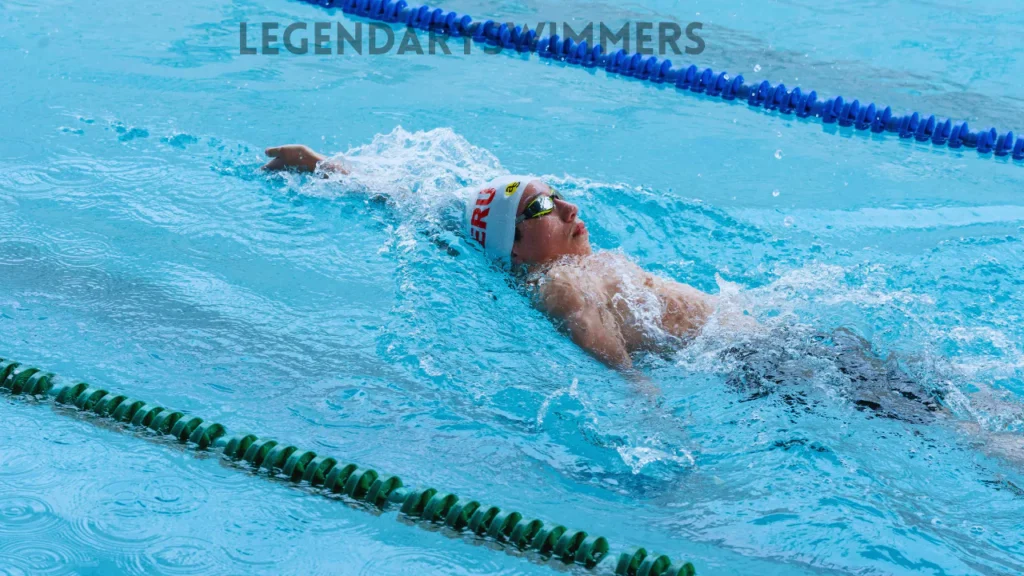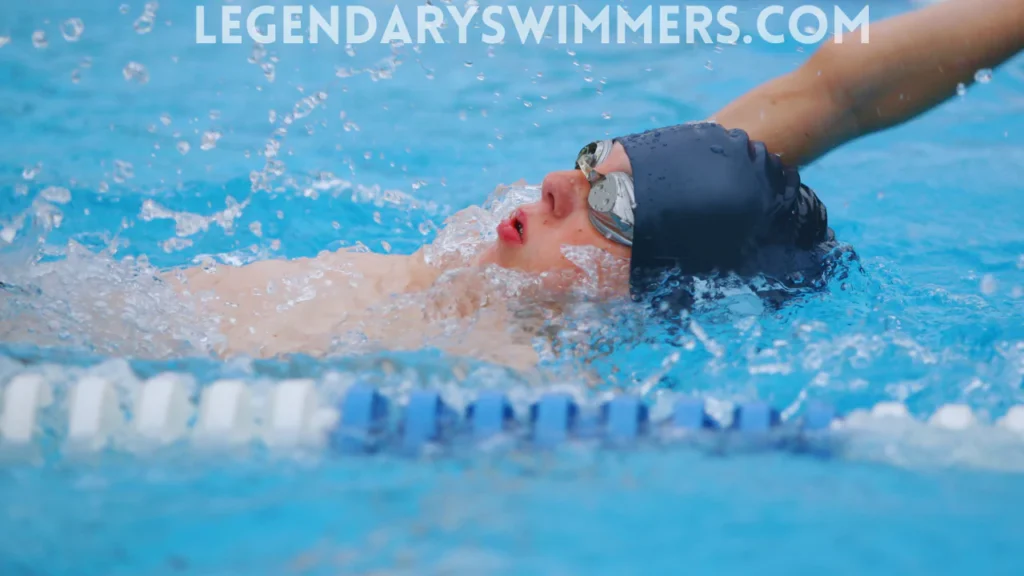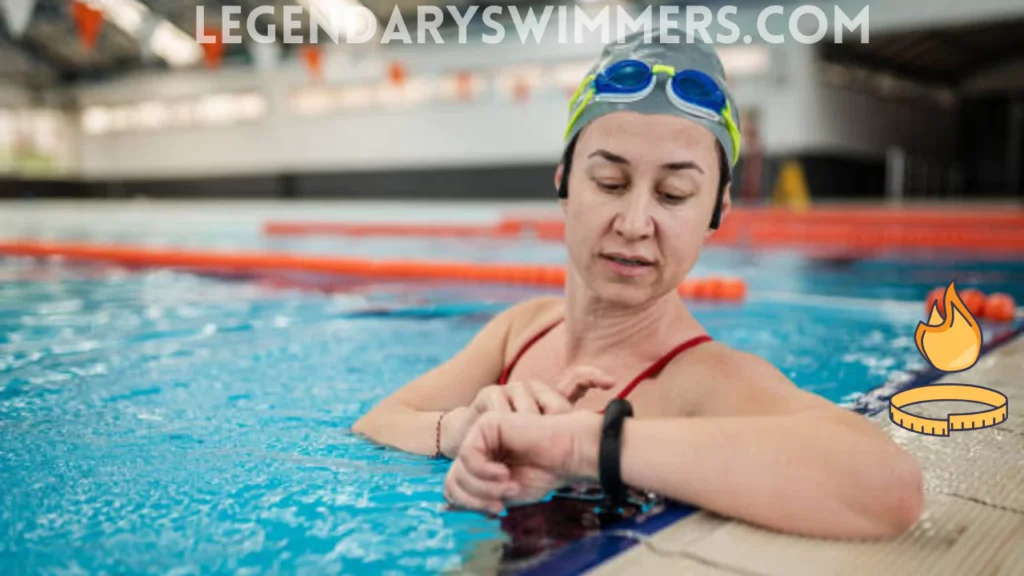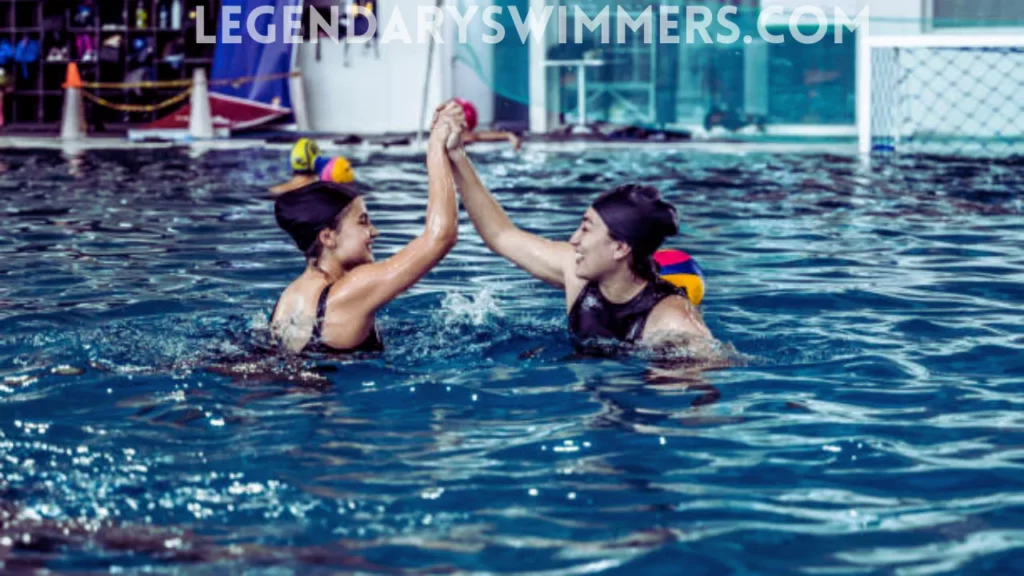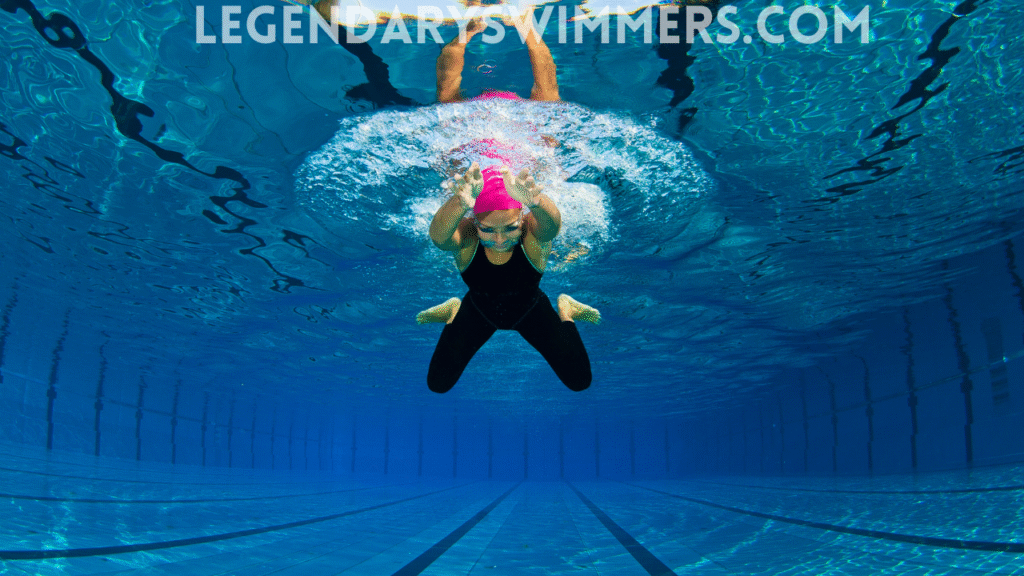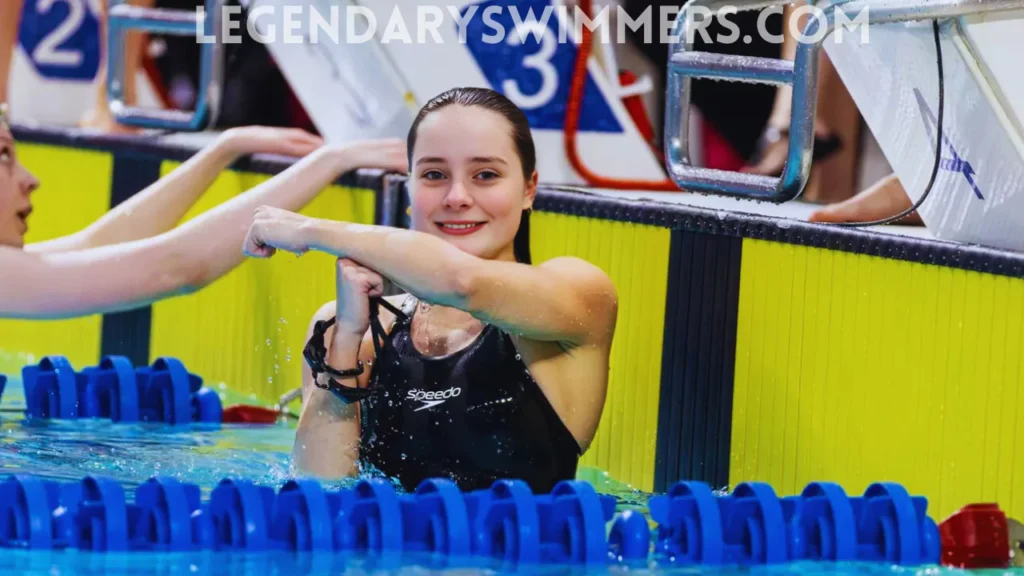
Swimming Competitions Rules, Formats & Event Guide (2025)
- Updated:
Swimming competitions represent some of the most-watched and widely participated in sporting events worldwide. From local club meets to the grand stage of the Olympics, these events follow specific formats, rules, and structures designed to test athletes’ abilities across various strokes, distances, and competition styles.
Whether you’re an aspiring competitive swimmer, a parent of a young athlete, or simply a swimming enthusiast, understanding the format of swimming competitions provides valuable insight into this dynamic sport. This guide covers everything from basic competition structures to specific swimming event formats, timing systems, and qualification standards.
- Basic Structure of Swimming Competitions
- Competition Venues: LC and SC Formats
- Swimming Event Formats
- Official Rules and Timing
- Competition Categories
- Event Scheduling and Meeting Operations
- Training for Different Race Formats
- Technology and Modern Competition Management
- Recommended Products for Basic Training & Competition Essentials
- Conclusion
Basic Structure of Swimming Competitions
Swimming competitions are organized events where athletes compete in various race formats using different strokes and distances. These meets adhere to standardized rules set by international bodies—most notably World Aquatics (formerly FINA)—or by national swimming federations that follow similar guidelines.
Types of Swimming Competitions
Competitions can be categorized based on age, skill level, or organizational structure:
-
Age-Group Competitions: Divided by age categories (e.g., 10 & under, 11–12, 13–14, etc.)
-
Open Competitions: Open to swimmers of all ages.
-
Masters Competitions: For adult swimmers, typically aged 25 and older.
-
School/Collegiate Competitions: Organized by educational institutions.
-
Club Competitions: Between different swimming clubs.
-
National Championships: Represent the highest level of competition within a country.
-
International Competitions: Include continental championships, world championships, and the Olympic Games.
Competition Venues: LC and SC Formats
A key distinction in swimming competitions is the pool length, which defines two primary formats:
-
Long Course (LC):
-
Held in 50-meter pools (“Olympic-sized”).
-
Requires fewer turns, emphasizing endurance.
-
Used for major international competitions, including the Olympics.
-
-
Short Course (SC):
-
Conducted in 25-meter or 25-yard pools.
-
Involves more turns, making the wall technique crucial.
-
Often produces faster times and is common for school, club, and seasonal competitions.
-
Some regions, particularly in the United States, also use 25-yard pools (SCY), establishing a separate format with its own records and time standards.
Competition Formats and Stages
Most swimming competitions progress through a series of stages:
Heats:
All entered swimmers compete, typically seeded based on entry times, with the fastest usually placed in the middle lanes.
Semifinals:
In larger competitions (usually for events 200 meters and shorter), the fastest swimmers from the heats advance. Not every meet uses semifinals.
Finals:
The championship round is where medals are decided. Finals may be subdivided into A (championship), B (consolation), and sometimes C (bonus) finals, depending on the competition.
Timed Finals:
For some longer-distance events or relays, swimmers race only once, and final placements are determined by comparing times across heats.
Swimming Event Formats
Competitive swimming features a variety of events categorized by stroke, distance, and competition type.
Individual Stroke Events
Four official strokes are recognized, each with its own technical rules:
| Stroke | Key Rules | Common Distances |
|---|---|---|
| Freestyle | Front crawl preferred; touch the wall each lap. | 50m, 100m, 200m, 400m, 800m, 1500m |
| Backstroke | Stay on back; may flip to front during turns. | 50m, 100m, 200m |
| Breaststroke | Symmetrical arms/legs; touch the wall with two hands. | 50m, 100m, 200m |
| Butterfly | Simultaneous arm strokes and dolphin kicks. | 50m, 100m, 200m |
Individual Medley (IM)
The IM combines all four strokes in a specific order: Butterfly, Backstroke, Breaststroke, and Freestyle. Common IM distances include 100m (short course only), 200m, and 400m.
Relay Events
Relay races introduce a team element, with each swimmer completing one segment of the race. Relay types include:
- Freestyle relays (4x50m, 4x100m, 4x200m)
- Medley relays (Backstroke, Breaststroke, Butterfly, Freestyle)
- Mixed-gender relays (Teams of two male and two female swimmers)
Distance Events
Long-distance swimming events test endurance and pacing:
- 800m freestyle (now for both men and women at the Olympics)
- 1500m freestyle (traditionally for men, now open to women as well)
- Open water events (5km, 10km, and 25km in natural settings)
Official Rules and Timing
Rules and Regulations
Swimming events adhere to strict rules to ensure fairness:
-
Starting Rules:
-
Swimmers begin from blocks (except in backstroke).
-
A false start typically leads to disqualification.
-
Swimmers must remain motionless until the start signal.
-
-
Stroke-Specific Rules:
Each stroke has its own technical requirements for turns, finishes, and underwater phases (typically limited to 15 meters after the start and turns). -
General Rules:
-
Swimmers must finish in the same lane they started in.
-
Obstruction or interference with another swimmer can lead to disqualification.
-
-
Equipment Regulations:
Covering approved swimwear, caps, and goggles, with restrictions on taping and jewelry.
Timing Systems
Accurate timing is critical in swimming, where races can be decided by hundredths of a second:
-
Automatic Timing:
Uses touchpads at the finish, with backup buttons and video systems. -
Semi-Automatic Timing:
Combines manual timing buttons with multiple timers. -
Manual Timing:
Uses stopwatches by trained officials with averaging or median methods to determine the official time.
Competition Categories
Age Group and Performance Levels
Competitors are often grouped by:
-
Age Groups:
-
Youth (e.g., 10 & under, 11–12, etc.)
-
Senior (typically 19 and over)
-
Masters (typically 25+ in five-year bands)
-
-
Performance Level:
Ranges from novice and “B” meets to elite “A” meets and invitational events with qualifying times.
According to MDPT, “In youth competitions, swimmers born early in the year are overrepresented (58.65% prevalence), especially in male-dominated, strength-based events like butterfly.”
Paralympic Swimming Classifications
For swimmers with disabilities, classifications ensure fair competition:
-
S1–S10: For athletes with physical impairments (higher numbers indicate less severe impairments).
-
S11–S13: For athletes with visual impairments.
-
S14: For athletes with intellectual impairments.
Note: Deaf athletes compete in separate events (such as the Deaflympics) rather than under Paralympic classifications.
Major Competitions and Their Formats
Olympic Swimming
-
Held in a 50m pool.
-
Features a range of events with heats, semifinals (for races 200m and shorter), and finals.
-
Nations are typically limited to two swimmers per individual event.
-
Qualification involves achieving Olympic Qualifying Times (A cuts) and Selection Times (B cuts), along with universality places for nations without qualified swimmers.
World Championships
-
Organized by World Aquatics, featuring both long course (50m) and short course (25m) formats.
-
Similar in structure to the Olympics, with additional events such as 50m races for all strokes.
-
Nations may enter up to three swimmers per event if all meet the A standard.
National and Collegiate Championships
-
National Championships:
Held as either short-course (winter) or long-course (summer) events with age-group and open categories. -
Collegiate Competitions:
Often held in 25-yard pools (especially in the United States), with dual meets, invitationals, and conference championships that emphasize team scores as well as individual performances.
Event Scheduling and Meeting Operations
Organizing a swimming competition involves meticulous planning:
-
Program Structure:
Sessions may be divided into morning heats and evening finals. Events are ordered to allow sufficient recovery between swims, with careful consideration given to alternating shorter and longer events. -
Meet Operations:
Coordination among officials (referees, starters, judges, timers), administrative staff, and clear communication protocols is essential. This includes managing warm-up periods, lane assignments, and timely results compilation. -
Multi-Day Meets:
Larger competitions may span several days, with strategic event placement (e.g., relays concluding the final day).
Training for Different Race Formats
Competitive swimmers tailor their training to match the demands of their events:
-
Sprint Training (50m–100m):
Emphasizes explosive power, start and turn techniques, and high-intensity intervals. -
Middle-Distance Training (200m–400m):
Balances speed with endurance and focuses on pacing and lactate tolerance. -
Distance Training (800m–1500m):
Focuses on aerobic endurance, high training volumes, and threshold work. -
IM Training:
Develops proficiency across all four strokes with a focus on smooth transitions and overall versatility.
Technology and Modern Competition Management
Modern swimming competitions incorporate advanced technologies:
-
Timing Systems:
Touchpads, backup timing buttons, and video systems ensure precise measurements. -
Starting Blocks:
Now often equipped with sensors to detect false starts and adjustable features for optimal performance. -
Video Analysis:
Underwater cameras help in stroke analysis and official reviews of turns and finishes. -
Management Software:
Electronic entry systems, real-time results, and digital meet management streamline operations.
What Makes a Great Swimming Competition?
Successful competitions depend on several factors:
-
Facility Considerations:
Proper temperature control, lane rope tension, and spectator seating are essential. -
Efficient Time Management:
A well-organized schedule with adequate warm-up periods and session lengths (typically 3–4 hours) ensures smooth progress. -
Participant and Spectator Experience:
Clear communication, fair competition, and visible scoreboards enhance the overall experience. -
Evolution and Innovation:
The sport continues to evolve with innovations like mixed relay events, expanded event offerings, and improved data analytics for performance review.
Preparing for Your First Swimming Competition
For newcomers, preparation is key:
-
Entry-Level Meets:
These include development competitions with relaxed qualifying standards, often accepting “no times” (NT) for first-timers. -
Essential Preparation:
Familiarize yourself with rules, practice race routines, and understand check-in procedures. -
Equipment and Mental Readiness:
Ensure you have regulation swimwear, goggles, and caps. Additionally, set realistic goals, visualize your race, and work on anxiety management.
Recommended Products for Basic Training & Competition Essentials
 Speedo Unisex-Adult Swim Cap Silicone Elastomeric
Speedo Unisex-Adult Swim Cap Silicone Elastomeric
 Speedo Women’s Swim Goggles Mirrored Vanquisher 2.0
Speedo Women’s Swim Goggles Mirrored Vanquisher 2.0
 Speedo Swim Training Kickboard Adult
Speedo Swim Training Kickboard Adult
 Speedo Unisex Adult Swim Training Fins
Speedo Unisex Adult Swim Training Fins
Conclusion
Understanding swimming competition formats helps swimmers, coaches, parents, and spectators navigate this technical and exciting sport. From local age-group meets to the Olympic Games, each competition offers unique challenges and opportunities for athletes to test their abilities against both the clock and their competitors.
Related Article: Types of Races in Competitive Swimming: Expert’s Guide
References

Natasha Nicole Leyva
Hi, I’m Natasha—swimmer, coach, and aquatic fitness enthusiast. My journey began in New Zealand after a professor recommended swimming to help with a knee injury. The low-impact nature of swimming worked wonders, and it quickly became my favorite form of exercise. This passion grew into a thriving swim academy, and soon, requests for aquatic fitness classes started pouring in. After becoming certified, I realized how powerful water workouts could be for recovery and fitness. Now, I share my expertise here to help others experience the benefits of aquatic movement—whether for recovery, fitness, or fun!

